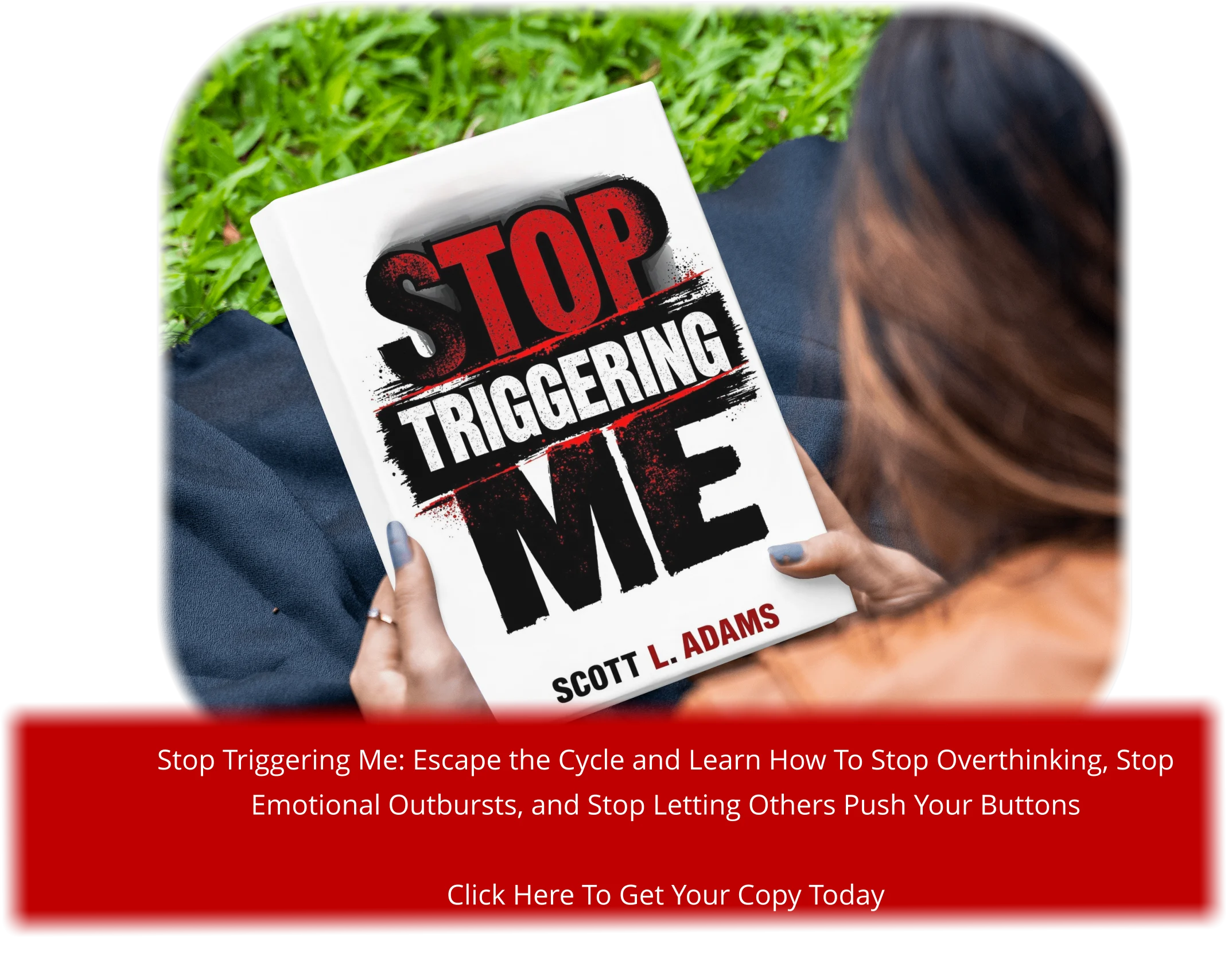Did you know that stress affects over 33% of Americans, causing a myriad of mental and physical health issues? I’ve discovered that one of the most effective and accessible tools for managing stress is mindful breathing. By focusing on the breath, we can anchor ourselves to the present moment, reducing feelings of anxiety and promoting a sense of calm.
Through my personal journey with anxiety, I’ve found that paying attention to my breath creates an immediate sense of calm, pulling me away from spiraling thoughts about the past or future. This simple yet powerful technique has been a game-changer for me, and I’m excited to share it with you.
By practicing breathing techniques, we can influence our thoughts and emotions, promoting both mental and physiological calm. Different types of breathing techniques have been linked to numerous health benefits, from reducing levels of oxidative stress to easing anxiety and improving cardiovascular function.
Key Takeaways
- Discover how mindful breathing can alleviate stress and anxiety.
- Learn simple yet effective breathing techniques to promote calm.
- Understand the benefits of incorporating breathing exercises into your daily routine.
- Find out how mindfulness practices can improve overall well-being.
- Explore the connection between breath and emotional regulation.
Understanding the Power of Breath
The way we breathe is intricately linked with our emotional state, and understanding this connection can be a powerful tool in managing stress. When we’re under stress, our breathing pattern changes, often becoming shallow and rapid. This change is part of our body’s automatic response to perceived danger, but it can reinforce the stress cycle rather than alleviate it.
The Science Behind Mindful Breathing
Research has shown that our breathing is closely tied to our heart rate and stress response. When we’re anxious, our sympathetic nervous system (SNS) is activated, accelerating our heartbeat, breathing rate, and blood flow. Conversely, our parasympathetic nervous system (PNS) promotes relaxation by slowing down our breathing, heart rate, and metabolism. Mindful breathing can activate the PNS, triggering a relaxation response.
How Breath Affects Your Stress Response
By intentionally changing our breathing pattern, we can influence our stress levels. When we’re under stress, focusing on slowing down our exhales can signal to our body that we’re safe, breaking the cycle of escalating anxiety. This technique empowers us to control our breath and, in turn, manage our emotions more effectively.
- Mindful breathing can quickly activate the parasympathetic system, promoting relaxation.
- By controlling our breath, we can influence our stress response and reduce anxiety.
- Focusing on our breathing can help us manage our emotions and promote overall well-being.
Benefits of Mindful Breathing Exercises
The benefits of mindful breathing exercises are multifaceted, and I’ve experienced firsthand how they can alleviate stress and improve overall well-being. As I’ve incorporated mindfulness into my daily routine, I’ve noticed significant improvements in both my physical and mental health.
Physical Benefits
Regular mindfulness practice has been shown to reduce cortisol levels, our primary stress hormone, leading to a calmer physical state. Additionally, studies have demonstrated that mindfulness meditation can have a positive impact on various physiological processes.
Mental and Emotional Benefits
The mental and emotional benefits of meditation are equally impressive. By cultivating mindfulness, I’ve found that I’m more resilient to emotional challenges and better equipped to manage anxiety. Research supports this, showing that mindfulness meditation can decrease symptoms of depression and improve mood.
Research-Backed Results
Studies have consistently shown that research-backed meditation practices can lead to significant benefits. For instance, a study published in the Journal of Alternative and Complementary Medicine found that mindfulness-based stress reduction programs resulted in decreased symptoms of depression. As someone who was initially skeptical, I’ve been encouraged by the robust research supporting the effectiveness of mindfulness practices.
Getting Started with Mindful Breathing
As you begin your mindful breathing journey, it’s essential to set the stage for a successful practice. Mindful breathing is a powerful tool for reducing stress and increasing overall well-being, but it requires a conducive environment and a willingness to commit to regular practice.
Creating the Right Environment
To start, find a quiet and comfortable space where you can sit and breathe without distractions. This could be a corner in your home, a local park, or even your office during a break. The key is to identify a spot where you feel safe and relaxed, allowing you to focus on your breath. I recall a time when I started practicing mindful breathing in my backyard, surrounded by nature – it was incredibly calming.
Finding a Comfortable Position
Once you have your space, it’s time to think about your posture. You can sit on a chair, on a cushion on the floor, or even lie down, though it’s generally recommended to avoid lying down to prevent falling asleep. The goal is to be comfortable so you can focus on your breath. Experiment with different positions until you find one that works for you.
Setting Realistic Expectations
It’s also crucial to set realistic expectations. When I first started, I expected my mind to become perfectly calm, and I felt like a failure when thoughts kept interrupting my meditation. However, I’ve learned that having thoughts arise isn’t failure – noticing them and gently returning to the breath is the practice. Start with just a few minutes a day, and gradually increase as you become more comfortable with the practice.
By creating the right environment, finding a comfortable position, and setting realistic expectations, you’ll be well on your way to developing a consistent mindfulness practice that brings calm and clarity into your life.
Basic Mindful Breathing Technique
The foundation of mindful breathing lies in its basic technique, which is both straightforward and profoundly effective. At its core, mindful breathing involves focusing your attention on your breath, cultivating a sense of awareness and calm. I’ve found that this simple practice can have a significant impact on both mental and emotional well-being.
Simple Breath Awareness
To start, find a comfortable position, either sitting or lying down, and bring your attention to your breath. Focus on the sensation of the air moving in and out of your nostrils, or the rise and fall of your chest. When your mind wanders (and it likely will!), gently acknowledge the thought and return to your breath without judgment. This practice of simple breath awareness helps to calm the mind and reduce stress.
Counting Your Breaths
For those who find it challenging to maintain focus on their breath alone, counting breaths can be a helpful technique. I start by counting “one” on my first inhale-exhale cycle, “two” on the second, and so on up to ten, then starting over again at one. If I lose track of my count, I simply begin again without criticizing myself. This technique engages my thinking mind just enough to keep it occupied, while still allowing me to drop into a deeper state of mindfulness with my breath.
Some people find it helpful to count only the exhales, which can create a more relaxed attention. The key is to find a counting method that works for you and helps you stay focused on your breathing.
Belly Breathing for Deep Relaxation
One of the most effective ways to calm your mind and body is through belly breathing exercises. Deep breathing, also known as diaphragmatic breathing, engages your diaphragm, promoting a sense of calm and relaxation. By focusing on your breath, you can deactivate the stress response and bring your body into a calmer “rest and digest” state.
Step-by-Step Instructions
To practice belly breathing, start by finding a comfortable position, either lying down or sitting comfortably with your back straight. Place one hand on your belly and the other on your chest. Inhale deeply through your nose, allowing your belly to rise as your diaphragm descends. Your chest should not move. Exhale slowly through your mouth, allowing your belly to fall as your diaphragm rises. Repeat this process, focusing on the sensation of your belly rising and falling.
Tips for Maximum Effectiveness
To get the most out of belly breathing, consider the following tips:
- Extend your exhales to be longer than your inhales to enhance relaxation.
- Practice lying down initially to facilitate diaphragmatic breathing.
- Consistency is key; daily practice, even if brief, is more beneficial than occasional longer sessions.
- If you’re having trouble feeling your belly expand, try placing a light book on your abdomen to visualize the movement.
- Be patient with yourself as belly breathing may feel unnatural at first, but it becomes second nature with practice.
By incorporating these tips into yourbreathing exerciseroutine, you can experience deeper relaxation and a greater sense of calm.
Calming Breathing Techniques for Immediate Stress Relief
When stress hits, I’ve found that a few simple breathing techniques can make all the difference in calming my mind and body. These techniques are not only effective but also easy to incorporate into daily life, providing a quick escape from the pressures of the day.
Extended Exhale Breathing (4-7-8 Method)
The 4-7-8 method involves breathing in through the nose for a count of 4, holding the breath for 7, and exhaling through the mouth for 8. This extended exhale can help slow down your heart rate and promote relaxation. By focusing on the count, you can distract yourself from stressful thoughts and calm your nervous system.
Sighing Breath for Emotional Release
Sometimes, stress builds up and needs to be released. The sighing breath is a simple technique where you inhale fully and then exhale with a deep sigh, allowing your body to release tension. This can be particularly helpful when you’re feeling overwhelmed or anxious, as it provides a physical release of pent-up emotions.
Ocean Breath (Ujjayi Breathing)
One of my favorite techniques is the Ocean Breath, also known as Ujjayi Breathing. To practice this, you start by taking a slow inhale through your nose, and then exhale through a slightly constricted throat, creating a soft ocean-like sound. This gentle sound provides a consistent auditory focus that helps anchor your attention, making it easier to stay present with your breath even when distractions arise.
- The Ocean Breath has become a go-to technique for me when I need to create a sense of calm, especially in chaotic environments.
- It’s versatile and can be practiced subtly in public settings, making it a valuable tool for managing stress on the go.
- This technique creates a meditative quality that’s more engaging than silent breathing, which is why I often use it as a transition into a deeper meditation practice.
By incorporating these breathing techniques into your daily routine, you can develop a powerful toolkit for managing stress and promoting overall well-being.
Advanced Mindful Breathing Exercises
As we explore the realm of mindful breathing, it’s time to dive into advanced techniques that can elevate our practice. These exercises are designed to enhance focus, reduce stress, and boost energy levels. By incorporating these methods into your daily routine, you can experience a deeper sense of calm and mental clarity.
Box Breathing for Focus and Calm
Box breathing, also known as square breathing, is a technique used by athletes and military personnel to enhance focus and calmness. It involves breathing in for a count of 4, holding for a count of 4, exhaling for a count of 4, and holding again for a count of 4. This creates a “box” shape with your breath, promoting balance and relaxation. This technique can be particularly useful during high-stress situations or when you need to concentrate.
Alternate Nostril Breathing
Alternate nostril breathing is a yoga technique that balances the breath and calms the mind. By closing one nostril and inhaling through the other, then switching to exhale through the opposite nostril, you can harmonize your breath and reduce stress. This practice is said to balance the left and right hemispheres of the brain, promoting mental clarity and relaxation.
Energizing Breath for Mental Clarity
When you’re feeling sluggish, invigorate your mind and boost energy with a segmented breathing exercise. Inhale in four equal but distinct segments to fill the lungs, then let the breath out in one long, smooth exhale to empty the lungs completely.
“When you’re feeling sluggish, invigorate your mind and boost energy and alertness with this breathing exercise, based on a Kundalini yoga technique called segmented breathing,”
says Price. Repeat three or four times to feel a noticeable increase in energy and mental clarity.
By incorporating these advanced mindful breathing exercises into your practice, you can experience a profound impact on your mental and emotional well-being. Whether you’re looking to enhance focus, reduce stress, or boost energy, these techniques offer a powerful tool for achieving your goals.
Incorporating Mindful Breathing Into Your Daily Routine
Incorporating mindful breathing into your daily routine can be a game-changer for managing stress and improving overall well-being. As I have found in my own practice, making time for mindful breathing can have a significant impact on both mental and emotional states.
To start, you can incorporate mindful breathing into your daily routine at various times. Here are a few ways to do it:
Morning Breathing Rituals
Starting your day with a breathing exercise can set a positive tone for the day. I find that taking just a few minutes each morning to breathe mindfully helps me feel more grounded and prepared for whatever lies ahead.
Quick Breathing Breaks Throughout the Day
In addition to a morning ritual, taking short breaks throughout the day to practice breathing can help reduce stress and increase productivity. Even a single minute of mindful breathing can make a difference.
Evening Wind-Down Practices
In the evening, relaxation techniques such as extended exhale breathing can help signal to your nervous system that it’s time to wind down. I have found that incorporating a daily breathing practice in the evening has dramatically improved my sleep quality.
As you incorporate mindful breathing into your daily routine, take a moment to notice how your body and mind feel after taking the time to practice a little self-care. You might be surprised at the positive impact it has on your overall well-being.
As I reflect on my own experience, I recall that creating an evening breathing ritual has dramatically improved my sleep quality. My wind-down practice includes 10 minutes of slow, deep breathing while mentally reviewing three things that went well during my day – combining gratitude with relaxation.
Overcoming Common Challenges
As we dive into the practice of mindful breathing, it’s essential to acknowledge the common hurdles that can stand in our way. While mindful breathing is a powerful tool for managing stress and anxiety, it’s not without its challenges.
One of the most significant obstacles we face is our wandering mind. When we’re trying to focus on our breath, our minds often wander to other thoughts, worries, or distractions. Techniques like counting can help take us out of thought loops that feed stress, anxiety, or negative emotions.
Dealing with a Wandering Mind
When our minds wander, it’s easy to get frustrated or feel like we’re not doing it “right.” However, the key is to gently acknowledge the distraction and return to our breath without judgment. By doing so, we cultivate patience and develop our ability to focus.
Making Time for Practice
Another challenge is finding the time to practice mindful breathing. Even a few intentional minutes of calm, deep breathing can signal to our brain that everything is okay. By incorporating mindful breathing into our daily routine, we can make it a sustainable habit.
Breathing Through Intense Emotions
When we’re faced with intense emotions like anger, anxiety, or grief, it can be challenging to practice mindful breathing. However, by focusing on our breath, we can create space around our emotions and respond thoughtfully rather than react automatically. By practicing regularly during calm times, we can build the mental pathways that make it easier to access mindful breathing during emotional challenges.
Conclusion: Breathing Your Way to a Calmer Life
Through consistent practice, I’ve discovered that mindful breathing can lead to a calmer, more centered life. As I’ve explored various techniques, I’ve found that this simple practice has profoundly changed my relationship with stress and anxiety. The beauty of breathing exercises lies in their accessibility – no special equipment is needed, and they’re always available.
By incorporating mindful breathing into your daily routine, you can experience cumulative benefits, from better sleep to improved focus. Remember, the key is consistency and patience. As you explore these techniques, you’ll discover which ones resonate with you the most. My hope is that these breathing exercises become a trusted companion on your journey to a calmer life, helping you feel relaxed and centered, even in challenging times.









